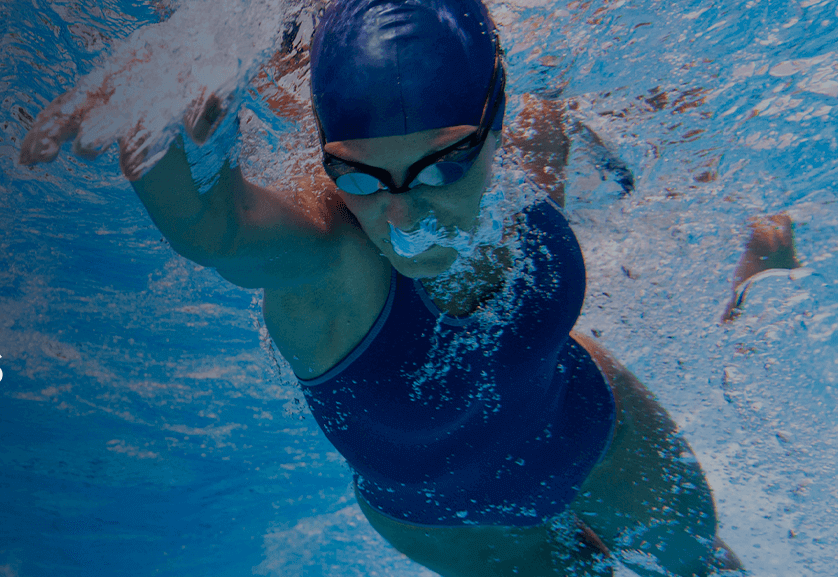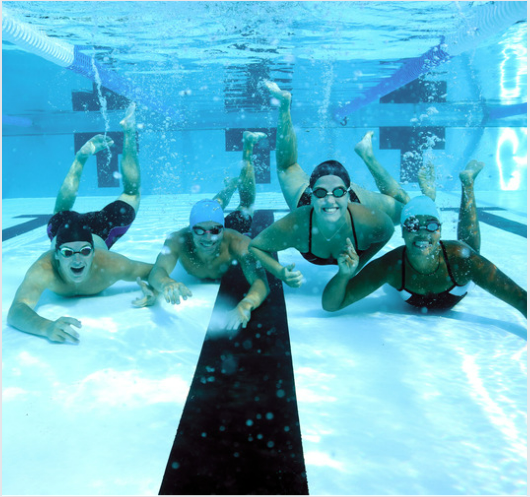The Different Types of Fabric Used in Swimsuits

Swim Apparel
|
June 7, 2022
The Different Types of Fabric Used in Swimsuits
Swimsuits have a long history that dates back to the 1700s. Naturally, the materials and fabrics that we use for swimsuits are nothing like those worn back then. With the introduction of synthetic materials, we created suits that can withstand chemicals, hold up against the sun and sand and have a comfortable fit that makes swimming or lounging more enjoyable. Although some suits are much more durable than others, it's typical for any suit to last for less than a year of consistent use. Some will only get you through the summer, while others will push that year mark and stretch their life a little longer. Because different fabrics have different properties, you might want to stock up on multiple suits. You can find a form-fitting suit that will look great in the sand or on the pool deck, a quality suit for training, and a competition suit that will last you throughout your season.Common Types of Swimsuit Fabrics
Most suits will blend multiple fabrics rather than having only one fabric. Regardless of your intended use, some materials add stretch and resistance to natural elements that make swimsuits more durable and better suited for either competitive or casual wear. Common types of swimwear fabric include:- Polyester: Polyester is the most common choice for swimsuits because it is resistant to chlorine and ultraviolet (UV) rays from the sun. It's durable, form-fitting and comfortable to wear.
- Nylon: Typically, nylon is what you think of when you imagine fashion swimwear. Although it's less UV resistant and chlorine can damage it, you can blend nylon with other fabrics and materials to create comfortable and stretchy swimwear.
- Elastane: You will not find a 100% elastane suit. Instead, manufacturers have to blend the elastane with other synthetic materials or natural fibers. Doing so will give the suit much more stretch. The production process for elastane can be extensive, so these suits are typically more expensive.
- Polybutylene terephthalate (PBT): PBT is a plastic yarn fiber with a natural stretch and a smooth and light feel. It has a stiffer texture but is excellent for athletic swimming.
- Natural fabrics: Cotton and wool are natural fabrics that were much more common in the earliest versions of the swimsuit. The first suits were made of wool, and cotton followed years later. Today, most people prefer to wear synthetic fabrics instead of natural fibers. Wool and cotton suits struggle to keep their shape, absorb water, and are easily damaged by the sun and sea salt.
- Neoprene: Neoprene is a synthetic rubber and is technically not a fabric, but it is used to make wet suits and other swimwear. Neoprene is the insulated foam that keeps water close to your body so that you stay warm when swimming in open waters. It is soft and comfortable and doesn't slip off.
The Benefits of Common Swimsuit Fabrics
The best swimsuit fabrics for you will be ones that make you comfortable for your activities. Whether you're looking for a suit to help you glide through the water, keep you warm in the ocean, or allow you the flexibility to perform workouts, make sure you're comfortable in your suit. Check out the benefits of these common swimsuit fabrics:Polyester
Polyester is more resistant to natural elements than other fabrics. It can hold up in chlorine and isn't easily damaged by the sun, making it great for indoor or outdoor swimmers. Polyester is also very durable and very easy to take care of, making it a popular choice. With quick-drying properties, zero water absorbency and the ability to absorb dye, these suits are ideal for teams and individuals.Nylon
Nylon feels and looks attractive. When blended with elastane, these suits can hug all your curves and make for wonderful fashion pieces. Nylon repels water and is quick-drying, but not as much as polyester. Because of their comfortable fit, nylon suits can be great for training or pool party attire but aren't as suitable for competitions unless paired with other fabrics.Elastane
Elastane is the fabric that brings us spandex and Lycra. These suits are form-fitting and can be blended with different swimsuit fabrics to create long-lasting and durable competitive suits or beautiful statement pieces. Because elastane must combine with other materials, the best competitive suits will have between 10% and 20% elastane.PBT
PBT will help you glide through the water when you pair it with a matte finish. It's also resistant to chemicals so that it will hold up in pools with chlorine. PBT is also fast-drying, comfortable and resistant to UV rays and piling, making it a great competition fabric.Neoprene
Neoprene has the advantage of keeping you warm. These suits will enable you to compete in races that take place during colder months or practice your skills in the winter. Your natural body heat can warm the water that your wet suit has trapped close to your body, helping you withstand colder temperatures.Natural Fabrics
Natural fabrics don't perform as well in the water, but they are more sustainable than the other options. They can create retro styles that help you stand out when sitting by the poolside or soaking in the sun. They're readily available and tend to be less expensive than other alternatives.Competitive vs. Casual Swimsuit Fabrics
Most competitive suits have the best swimsuit materials for chlorine, aid swimmers in gliding through the water, and are durable enough to last through multiple competitions. Casual swimsuits will typically last for the summer and, depending on their use and how often you take care of them, can last for up to a year. Most competitive or fitness swimmers wear polyester swimsuits. Team suits are usually made of polyester because you can print on them. Nylon makes suitable training swimsuits because they can be combined with elastane, but people primarily wear them as fashion pieces. You can find spandex in durable tech suits that are great for competitions because they propel you through the water. You can use neoprene for some competitions that take place in open waters to keep the athletes warm. Natural fabrics are not ideal for competitive swimwear. Because they soak in water, they create a drag in the water and they don't last as long with repetitive use. Wool and cotton can be beautiful statement pieces, but they won't aid you in swimming or gliding through the water. They struggle to hold their shape and take longer to dry, making them less suitable for competitions such as triathlons, where athletes need to switch from one event to the next without changing. The most durable suits will be a blend of fabrics. Polyester blended with elastane or PBT will be the most ideal for competitive swimmers. These suits will last longer, hold their shape the best, resist damage from UV rays and chlorine, and aid your movement in the water.Swimsuits From Kiefer Aquatics
Kiefer Aquatics has over 70 years of experience with swimwear, gear, equipment, and supplies. We're humbled by our origins and proud of our strides in the aquatic community. We have a customer satisfaction guarantee because we know we provide the best service and supplies out there. We have suits that you can wear for training, workouts, and competing. Whether you're looking for a durable tech suit or looking to become an aerobics fanatic, we've got you covered. For team needs or individual pieces, browse swimwear from Kiefer Aquatics.Learn More About Swimwear:
- Choosing Swimsuit Fabric: An Ultimate Guide to Swimsuit Material
- Swim Shorts vs. Speedos
- What To Look For When Choosing A One-Piece Swimsuit
- Competitive Swimwear Sizing Guide
- How To Choose A Technical Swimsuit: A Step-By-Step Guide
- How To Choose A Technical Swimsuit
- Understanding the 12 & Under Technical Suit Ban
- Training Suits Explored and Explained Brand Edition: TYR







Leave a Comment
Your email address will not be published. Required fields are marked *